Sony VPL-VW295ES (US) - VPL-VW270ES (Europe)
Product Name: Sony VPL-VW295ES (US) - VPL-VW270ES (Europe)
Product Description: 4K SXRD Projector
-
Design - 9.3/10
9.3/10
-
Video Quality - 9.4/10
9.4/10
-
Inputs / Ports - 9/10
9/10
-
OS, Apps and Features - 8.8/10
8.8/10
-
Price / Quality - 9/10
9/10
Summary
Total Score
Pros
- Amazing image quality and HDR
- Great color representation
- Very quiet
- Good price for a true 4K projector
Cons
- Black levels could be better
- No lens memory
- It has no wireless network option
- No smart features
Cheapest Places to Buy :
*We are a reader-supported website. When you buy through links on our site, we may earn a small affiliate commission at no extra cost to you. Home Media Entertainment does not accept money for reviews.*
For a long time true 4K projectors were the crown jewel of projecting systems but as good as they were their prices were out of reach for most people making them something of a luxury item that only a few could enjoy. In trying to offer similar performance manufacturers created what it was most commonly called 4K pixel shifting projectors that were lower resolution, usually 1080p, and by employing various types of time-offset pixel shifting technologies they were able to display a 4K image. With this technology most brands were able to create projectors that could display images that were very close to real 4K resolution but at a fraction of the cost of a real 4K projector.
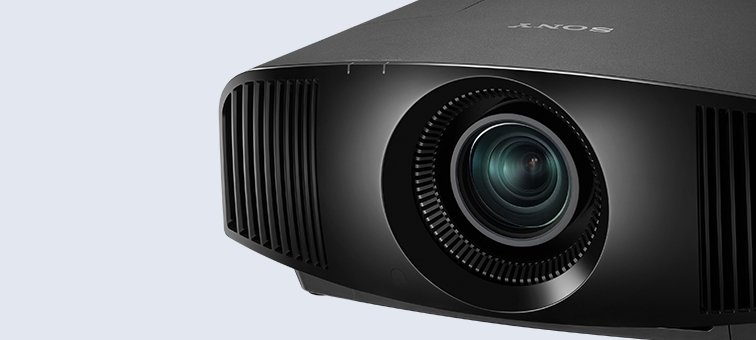
But 2018 seems to be the year that true 4K projectors will make their biggest breakthrough as Sony is now offering a projector that is exactly at the $5K mark which may not be the most affordable amount of money but it certainly is the best one yet for a true 4K projector and is approaching affordable levels for a good quality home theater. Sony really made waves in 2017 with their first affordable true 4K projector, the VPL-VW285ES, so now it seems their second generation of affordable 4K projectors are here to take what was already in place and improve upon them. At CEDIA 2018 Sony unveiled 3 new 4K models, the VPL-VW995ES, the VPL-VW695ES, and the most budget-friendly model in their lineup the VPL-VW295ES.
But do they offer enough of an improvement to be considered a worthy upgrade? Read our Sony VPL-VW295ES review to find out.
Design
If you take a first look at the body of the projector it will be hard to find any real differences in comparison with the previous VPL-VW285ES with the only real difference being that the VPL-VW295ES is about half inch taller and it now stands at 19 1/2″ x 7 11/16″ x 18 1/4″ (496 x 205 x 464 mm) and has a weight of approximately 31 lb (14 kg) so obviously it’s not a projector with mobility in mind and you better not plan or taking it for a ride to your friend’s house for a Saturday night viewing. With it’s size this projector is meant to be placed in a fixed position and stay there.
Sony continues to use the same kind of design we have seen them using to most of their projectors lately with clean lines and a general minimalistic approach that characterizes most Sony models. The main body is made out of a dark grey plastic with a rough finish while the front has a shiny smooth black finish that is very much a fingerprint magnet. As we look the projector from behind we find all connection ports on the lower right side while on the top we get some indicator lights as well as the lamp door. The Sony and 4K SXRD logos are they only elements that break the monotony of the top panel.
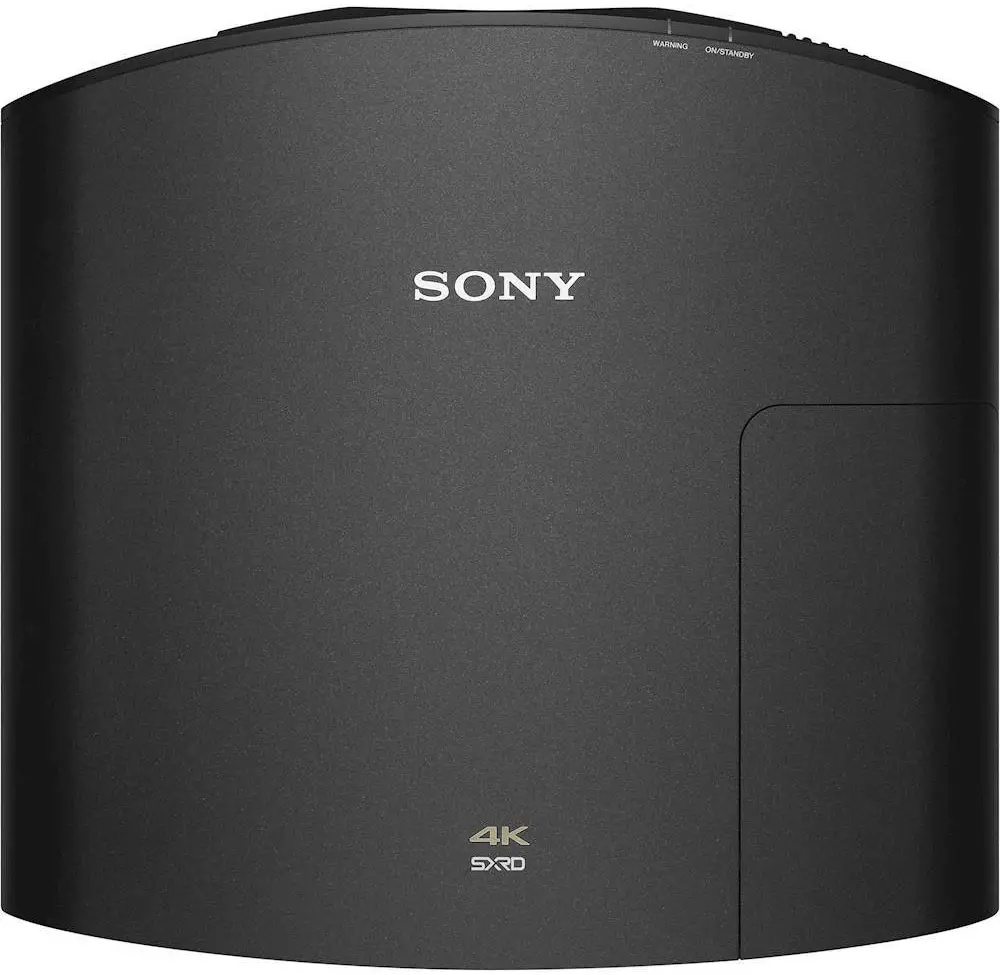
On the left side Sony has positioned a rather simplistic control panel with the most essential buttons that can be easily missed. There we find buttons for power, input selection, menu, a micro stick for navigation and a lens button for controlling zoom, shift and lens focus. On the front panel we get the lens at a center position while next to it there is the IR receiver. Both sides of the front panel house big air ports for heat management and they have a very characteristic, fish gills like, design. At the bottom front there are two screw adjusted legs for easy calibration.
As for it’s lens the VPL-VW295ES comes with completely motorized controls and as such there are no visible manual controls of the lens on the projector’s body. The 2.06:1 zoom provided is as good as it gets for this range and you will have to go into much higher prices to find better than this while there is an incredible amount of lens shift which measures at +85% -80% vertical and +/-31% horizontal. Sony claims that the VPL-VW295ES can be used with screens from 60″ to 300″ which means that for a 16:9, 100″ screen you will have to place the projector anywhere between 115 to 235 inches away. Unfortunately there is no lens memory so you will have to manually change aspect ratios when needed.
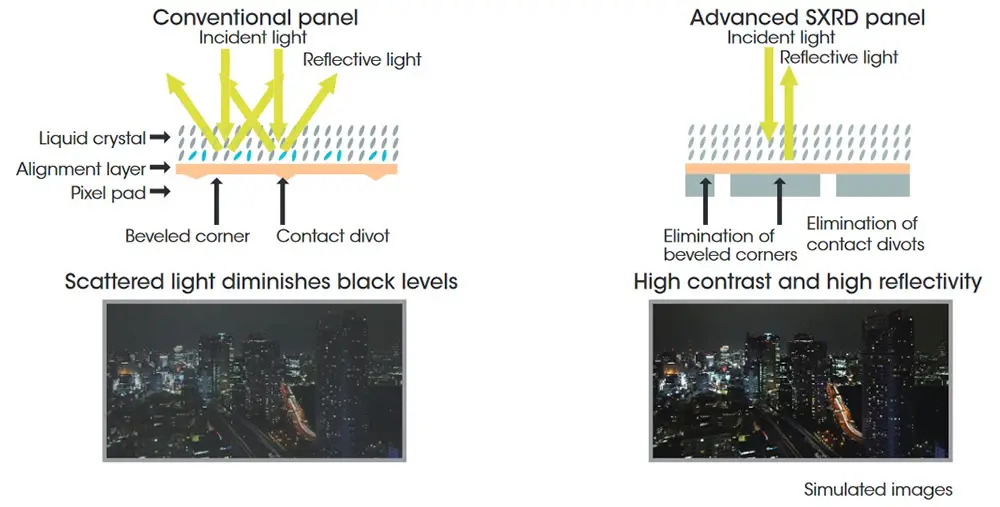
Like with all the other 4K projectors from Sony what we get under the hood of the VPL-VW295ES are 3 4K SXRD imaging chips with a resolution of 4,096 x 2,160 as seen in commercial theaters. SXRD (Silicon Crystal Reflective Display) technology is Sony’s variant of LCoS (liquid crystal on silicon) and each chip, one each for red, green, and blue, has a size of 0.74″ and are responsible for bringing the full 4K resolution on the screen. Consumer 4K is of course 3840 x 2160 resolution so the rest of the pixels simply go unused.
The Sony VPL-VW295ES is a very quiet projector especially when it is operated in Low Lamp mode in which case it is completely inaudible with measured noise of just 26dB. Low lamp mode will mostly be used during Full HD/SDR content that brightness requirements are lower. But during extended bright scenes, for example during 4K with HDR viewing, when the lamp will be set to High then the cooling fan becomes just a bit louder but at no point becomes bothersome.
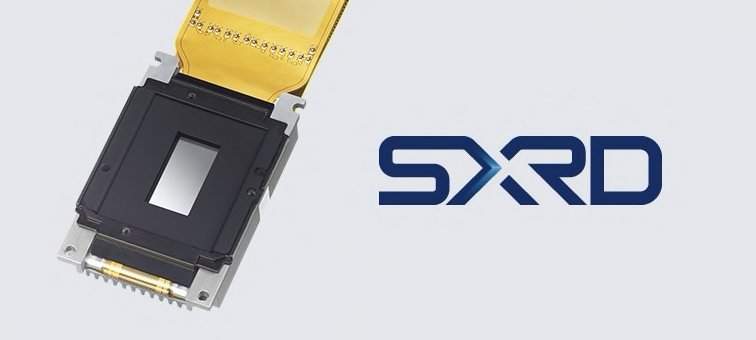
The projector has a rated lamp life of 6,000 hours operated in Low lamp mode while power consumption is 390 watts. The projector also features a standby mode that activates after 10 minutes of input signal inactivity and can be turned off if you don’t want it.
The included remote is similar to last year and offers functionality and ease of use. The buttons are split into groups and there is enough, often unnecessary, space between them. On top we get backlight, input and power buttons. Under these we get a group of nine buttons for the eight provided picture modes plus a user, custom created picture mode. Under these we get the usual menu navigation buttons and under these we get another group of nine shortcut sub-menu buttons for fast access. On the bottom we get three switches for sharpness, brightness and contrast. We really liked how Sony has grouped all buttons as it is easy to find the one you want and provides very fast access to the most used functions of the projector. The backlight feature is another plus as it helps to find which button you want when used in dark rooms.

Video Quality
As a true 4K projector we selected the 4K UHD disc of Battleship in order to test image quality. Being able to display the full 4K signal without any tricks like the 4K pixel shifting projectors we had seen until now revealed a picture with amazing sharpness and great color reproduction. THE CGI created alien ships would reveal a great amount of detail on their outer armor. Since most of the film takes place on the ocean, when they emerge from the water you can see every drop and splash of water as they fight to stay afloat. With such a visual intense film image clarity always plays a significant role and here we get amazing results. We wanted to try a few selected scenes and ended up almost watching the whole film.
The projector supports HDR with both HDR10 and HLG but no HDR10+. And although HDR performance was in general good it will naturally fall short of any flat panel HDR performance. Top of the line flat panels can reach 2000 nits nowadays so when compared to the HDR brightness of projectors there is a lot to be desired. But nevertheless peak luminance, wide color gamut and higher bit depth is what makes the HDR presentation look brighter than any SDR content would.

VPL-VW295ES supports wide color gamut with full coverage of the BT.709 color space which means that when viewing Full HD/SDR content you get the correct color reproduction. The Sony projector also covers the wider DCI-P3 (part of the much wider REC.2020) color space but here it does only partially and by using internal processing it maps the colors to the gamut it is capable of producing. The end result may not be perfect DCI-P3 color reproduction but nevertheless colors are vibrant and lifelike giving the image more depth and realism.
The included 225 watts lamp of the projector gives it a rating of 1,500 lumens of brightness which in comparison may not be a lot but is enough for a low lit environment. Usually real brightness falls far from manufacturers claims so we were curious how close this one would go. The VPL-VW295ES has many different picture modes that include Bright Cinema, Cinema Film 1, Cinema Film 2, Reference, TV, Photo, Game, Bright TV and a User defined mode.
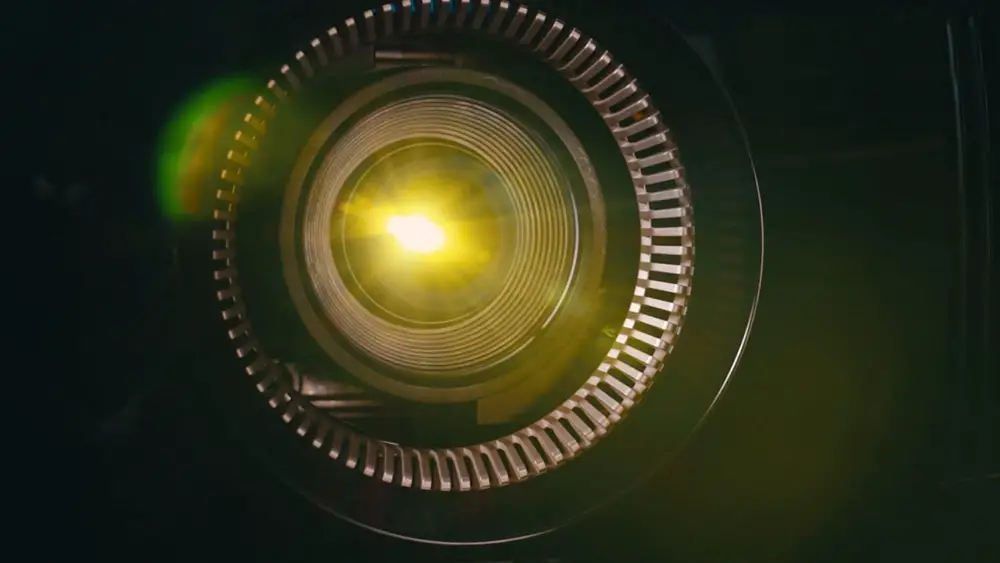
Each one gives very different results but for the shake of simplicity we mostly used the Reference picture mode that offers the most accurate colors from the rest out-of-the-box and with high lamp mode we were able to get 1,200 lumens which is very good. The highest brightness we were able to get with Bright Cinema mode which produced around 1,450 lumens while Photo mode gave us the least brightness of all the picture modes with around 1,150 lumens. Keep in mind that these numbers are for High Lamp mode with no Zoom In.
Black levels may be one of the few weak points of the VW295ES as the omission of a dynamic iris really hurts black level performance here. The step up model VW695ES comes with a dynamic iris but it comes with a hefty double price of the VW295ES which in all honesty is not worth it if controlling your budget is very important to you. Of course the environment also plays a big role on how the VW295ES handles black colors. In a completely dark room the problem shows more intense as blacks will typically be displayed mostly as dark greys. But if you use it in an even low light room the increase in ambient light will help to mask this problem and it will show much less. In general we cannot say we are disappointed, but we would definitely like to have a bit better performance in this area. The VW295ES can handle black levels good enough, it’s just not great. But if you are planning to use it in a room that will have some dim lighting then you will not see this as much as in a pitch black media area.
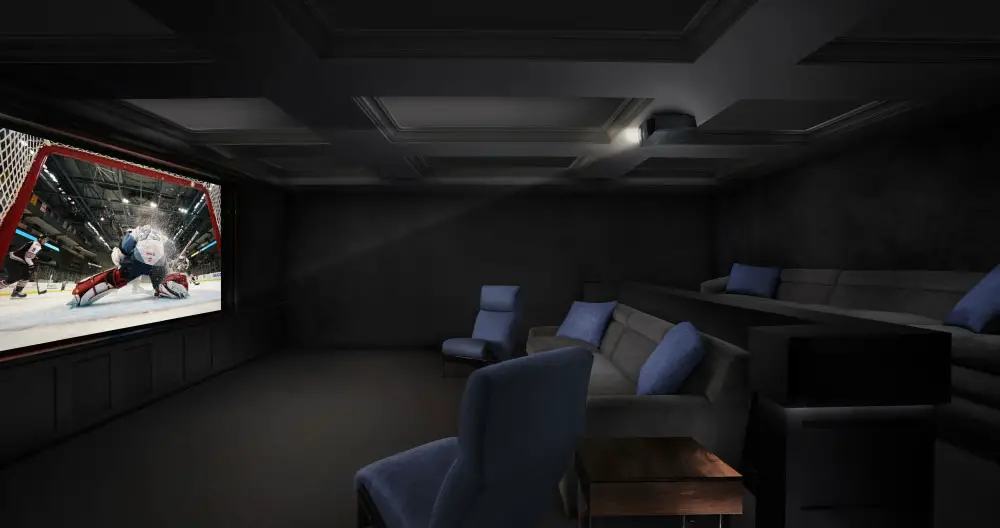
The projector may be capable at producing very sharp 4K images and great HDR but is also an amazing 1080p and SDR content performer. Upscaling worked like a miracle displaying excellent sharpness, color reproduction was spot on and brightness is plenty with enough to spare. We may be in the 4K era for good but the huge amount of Full HD content available necessitates that a good projector, even more so when we are talking about a 4K one, should be able to excel at 1080p/SDR content playback and the VW295ES is perfect at that.
This projector also offers support for the dying but still very popular 3D format. A lot of people seems to like it and have huge collections of 3D content so to see that the Sony VPL-VW295ES have full 3D support for 1080p content is a plus. You will need active 3D glasses for it to work which means there is some crosstalk and as always with 3D, brightness takes a dive but in general 3D works very good with the Sony projector and you really need a big screen to appreciate the effect. If you are worried about your 3D collection then this projector will make sure to take full advantage of it.

The VW295ES is also a very capable gaming projector. By having a “Input Lag Reduction” mode lowers the response time considerably. Playing games at 4K resolution with “Input Lag Reduction” and Game mode will bring the input lag to around 28ms which is considered very good. When you play games at 1080p Full HD resolution input lag jumps a bit higher since some processing and upscaling takes place and thus brings this number to around 40ms which may be higher but still at very respectable levels.
Sony projectors offered very good motion performance in general and the VW295ES continues this trend. Equipped with Sony’s MotionFlow that is a type of CFI now you can engage it even when looking at 4K content as it was limited to only HD content in previous models. It can reduce judder and blur during sports or fast action scenes but it can create the dreaded soap-opera effect so you better play with it a bit to find a setting that you will like the most.
Inputs
All connection ports are located to the right side of the projector as we look at it from behind and in general in the same vein as their more expensive Sony models the number of ports are relatively sparse compared to other brands. What we get is an Ethernet port and two 18 Gbps HDMI ports with HDCP 2.2 support that means 4K@60Hz, HDR and Wide Color Gamut compatibility. There is also a 12V trigger that can be used for motorized screens to open and close automatically, an IR-IN port to hard wire the remote, an RS-232 legacy port for command and control of the projector as well as a USB port.

And that’s all we get. Compared to some other projectors what we see here might seem too little and for such an amount of money we would like to get something more but it seems that most of the cost went towards the image quality and less for the connection options. And in this we are totally in agreement as what is offered is enough for the most usual setups.
OS, Apps and Features
The projector’s menu is very simple as it has been separated into different tabs that include Picture, Screen, Setup, Installation and Information settings. With so many features and calibration settings it is easy to get lost in there but thankfully everything is well organized even if the visual design is rather simplistic and we would like a more visual pleasing look.
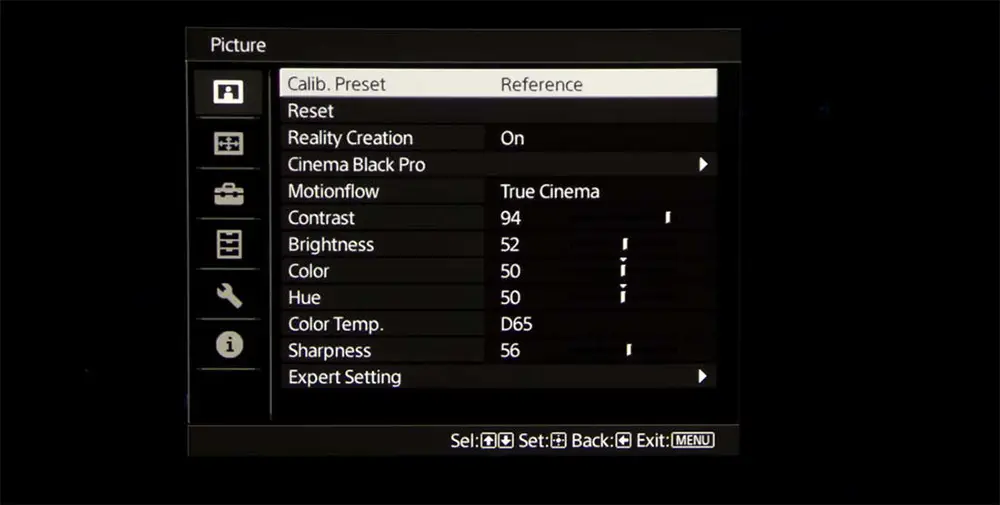
The projector comes with a wealth of image and motion processing features. Some of them we have already analyzed above but there are a few more that will definitely make any calibration purist to smile with the amount of control you have over the processed image. One of these features is Reality Creation which offers details enhancement control. Keeping it at a low setting helps improve the sharpness without adding any visible noise. But cranking it up to high levels will make noise more noticeable. In low levels it can really improve quality of HD/SDR content and create a more refined image.
There is also banding reduction with helps with displaying smoother colors gradations as well as Contrast Enhancer that can create a more pleasing effect. A 4K-capable vertical stretch mode is also present for use with an anamorphic lens.

The VPL-VW295ES along with the other two new projectors in the series are the first to receive the IMAX Enhanced certification. There may not be any IMAX Enhanced content available yet but having this stamp means that when it does become available this projector will be content ready making it more future proof. What differences this content will have in comparison to what we get now only remains to be seen.
The projector also come equipped with an Eco-mode which saves power but also drops lumen output. For SDR content the difference will not affect the outcome by much but during HDR content viewing it should be turned of. We tested various modes and what we saw was that with Eco mode turned on lumen output would fall around 30% which is more or less the standard with all projectors that come with an Eco mode.
Final Thoughts
Sony continues their excellent performance with their 2018 projectors and if 2017 was the first year that they offered a really affordable true 4K projector, in 2018 they managed to take everything good they did and improve upon it. The Sony VPL-VW295ES may have a price, at the time of writing, of $5K which may be a lot or not depending on how you see it but if you really consider what is being offered then you will immediately realize that we are entering an era of really affordable 4K projectors which was an unreachable dream just a couple of years ago.
There are so many things to like about the VPL-VW295ES and it shows that Sony even when pushing the price down to more affordable levels they don’t sacrifice the quality. The projector will offer a true 4K resolution with no tricks involved. What you see is what you get and a true 4K image it is. We were also very pleased with it’s color representation even out of the box without any calibration. This may not be the brightest of projectors but with 1500 lumens it can display bright enough images with very good HDR. It also offers 3D support even if it considered a dying format while projector noise is kept at very low levels almost all the times.
On the opposite side black levels are average and dynamic iris would greatly benefit this model but unfortunately we don’t get that here. Also not having a lens memory can be a bit of a pain if you want to switch between different aspect ratios. The amount of ports although adequate we would like to get some more since we have seen much cheaper models feature a wider range of them. Lastly most projectors nowadays start featuring smart functionality and wireless support which are both absent in the VPL-VW295ES.
Looking at the omissions, we get that Sony created this projector with one thing in mind. Best true 4K image quality and motion performance in this price range. Everything else is considered secondary and in all honesty it would raise the price to less lucrative levels. Sony wanted to keep the price at the psychological limit of $5K and they decided to keep some features at the minimum acceptable level in order to be able to offer the best image quality possible in this range. And in all honesty we agree with their decision as the Sony VPL-VW295ES offers what is most important among Home Theater enthusiasts and that is the best image quality possible with the least amount of money. Consumers wanted a good and affordable true 4K projector and Sony delivered once again.

For more reviews you can check our dedicated 4K Projector reviews list or even look at our Product Reviews Table where you can find the brand and specific product you are looking for.
Cheapest Places to Buy :
*We are a reader-supported website. When you buy through links on our site, we may earn a small affiliate commission at no extra cost to you. Home Media Entertainment does not accept money for reviews.*
Specifications
- Projection System : 4K SXRD panel, projection system
- Light Output (Lamp mode high) : 1500 Lumens
- Color Light Output (Lamp mode high) : 1500 Lumens
- Effective Imager Size : 0.74″ x 3
- Computer Signal Input – Maximum Display Resolution : 1920 x 1080 dots (HDMI Input only)
- Video Signal Input : 480/60p, 576/50p, 720/60p, 720/50p, 1080/60 i, 1080/50 i, 1 080/60p, 1080/50p, 1080/24p, 3840 x 216 0/24p, 3840 x 2160/25p, 3840 x 2160/30p, 3840 x 2160/50p, 3840 x 2160/60p, 4096 x 2160/24p, 4096 x 2160/25p, 4096 x 216 0/30p, 4096 x 2160/50p, 4096 x 2160/60p
- Effective Pixels : 26,542,080 (4096 x 2160 x 3) pixels
- Lamp Type : High-pressure mercury lamp, 225 W type
- Lamp Life : 6000 (Low mode)
- Screen Size : 60″ to 300″/1,524 mm to 7,620 mm (diag.)
- Projection Lens Zoom/Focus : Powered (Approx. x2.06)
- Projection Lens Shift : Vertical: +85% -80% Horizontal: +/-31%
- 3D Compatibility : Yes
- Dimensions (W x H x D)-(without protrusions) : 19 1/2″ x 7 11/16″ x 18 1/4″ – 496 x 205 x 464 mm
- Weight : Approx. 14 kg / 31 lb
- Noise Level : 26dB
- Operating Temperature : 5°C to 35°C (41°F to 95°F)/35% to 85% (no condensation)
- Power Consumption : 390W
- I/O Connectors : HDMI (2 INPUTS) – Digital RGB/Y Pb/Cb Pr/Cr, IR IN – Minijack, LAN – RJ45, 10Base-T/100BASE-TX, REMOTE – RS-232C, D-sub 9-pin (male), TRIGGER – Minijack, DC 12 V Max. 100 mA, USB – DC 5 V, Max. 500 mA
I’m doing research on setting up a home theatre and your review of the Sony 4K projector is very handy. I had actually forgotten about 3D movies – but seeing it mentioned in your article, I’m glad that this projector is compatible as I actually have a 3D version of my wedding video!
Your pros & cons are so nicely set out as is your specs list. I will be back to read this article again when I’m ready to purchase.
Hello Fiona. I am glad you found our review useful. If you need any help drop a comment here anytime.
Well it’s definitely nice to see the price of these 4K pixel shifting projectors coming down to a price area that more of us can afford.
You point out that the projector lacks any sort of smart functionality, will they be update this parameter at a future point, with an add-on or a type of upgrade? Also, what would I be expected to pay for a different model with these features?
The Sony VLP-VW295ES is not a pixel shifting projector. It’s a true 4K projector that displays all the pixels at the same time. As for smart functionality since it’s not there from the start there wont be any probably.
Hello there Stratos,
I have been keeping a not so close eye on the world of projectors for about ten years now in the hope that one day they will get good enough and cheap enough to replace the big clunky television. The size of televisions have certainly improved a lot and it looks like the projector technology is certainly keeping up with it.
Can I ask a few questions”
How expensive are the bulbs to replace? I remember long time ago I had a blown bulb on a projector- cost more than the price of a new projector to replace the bulb. What will it hit me back now?
For this specific projector a new lamp costs around $350-$500 depending on the shop you will find it. But in various stores I looked into the price range is the one I mention.
Hey there,
The best feature I liked is that it’s 4K. I wanna get this as soon as possible as I’ve loved the features and the pros as well. I have a question about the warranty aspect of it. Does this have any warranty options that come along with it?
Thanks in advance for answering my question and for the detailed review. Well Done!
Depends on where you live. In some countries I believe it’s 1 year while in other it’s 2. Just to be sure I would advise you to call Sony offices in your country and ask just to be sure.
Hi – thanks for sharing this in-depth review. I am a big fan of Sony and have many of their products, so I was interested to see what you thought of it. To me, the whole point of investing in 4k technology is the image quality, so I am glad that you think that it hits the mark with the sharpness and brightness. It seems odd that for what it costs that it doesn’t have wireless support. To be honest, despite being an avid home theatre fan, I don’t think I would invest this amount of money in a projector but if Santa happened to drop one down the chimney, I wouldn’t complain! All the best, Diane
I think noone would complain if Santa would throw down the chimney such a present Diane! As we wrote in the review Sony had to keep the price locked to the $5K mark so it would be natural to cut some corners to achieve that. Better like this than to lower the image quality and performance.
Hi! Thank you very much for this honest review. I appreciate you have gone through the pros and the cons in a very candid way.
After reading your post I have arrived at the conclusion that Sony’s intention with this projector is exactly what I’m looking for: the best true 4K image quality under $5K.
I also consider the omissions as secondary.
You are spot on Henry. Catching this $5K mark would mean that some things had to go, or pass to the more expensive models. But keeping the best image quality possible was a must and in this I think Sony did very well.